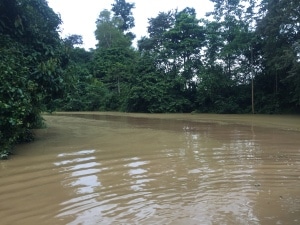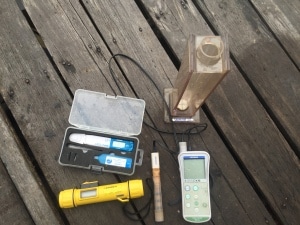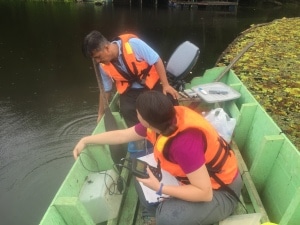Water Quality Monitoring in Kinabatangan Watershed
On June 3, 2016 (Day 3), Team Borneo met with Rosli to discuss the water quality monitoring KOPEL conducts. They began water quality monitoring in 2013 due to declining fish populations observed from the last 10 years. Just last year (2015), they witnessed two mass fish kills, one in September and another in November. From their water quality results it suggests that the fish died due to eutrophication, with high nutrient concentrations from runoff. The Kinabatangan watershed’s wet season starts in October, which makes sense that in late fall/early winter nutrient runoff occurs.

KOPEL’s water quality monitoring program entails visiting 10 sites twice a month. They monitor for: water temperature, dissolved oxygen, ph, water clarity, chemical oxygen demand (COD), ammonium, nitrate and nitrite. They focus on tributaries and drainage areas that enter the Kinabatangan River. They want to get a water quality lab so they can additionally collect total suspended solids (TSS) and biochemical oxygen demand (BOD) in order to meet water quality index requirements for Malaysia.

On June 23, 2016 (Day 10), three USF students (Arti, John, and Jenna) got to work alongside with Edris and Faizal to conduct water quality monitoring in Tungong Lake. The goal of the monitoring was to collect water quality conditions at several points around and in the lake to see if conditions changed with the presence or absence of the invasive Salvinia molesta. The results will be presented to the village and may also be used in a masters project.

By: Jenna Rinde
